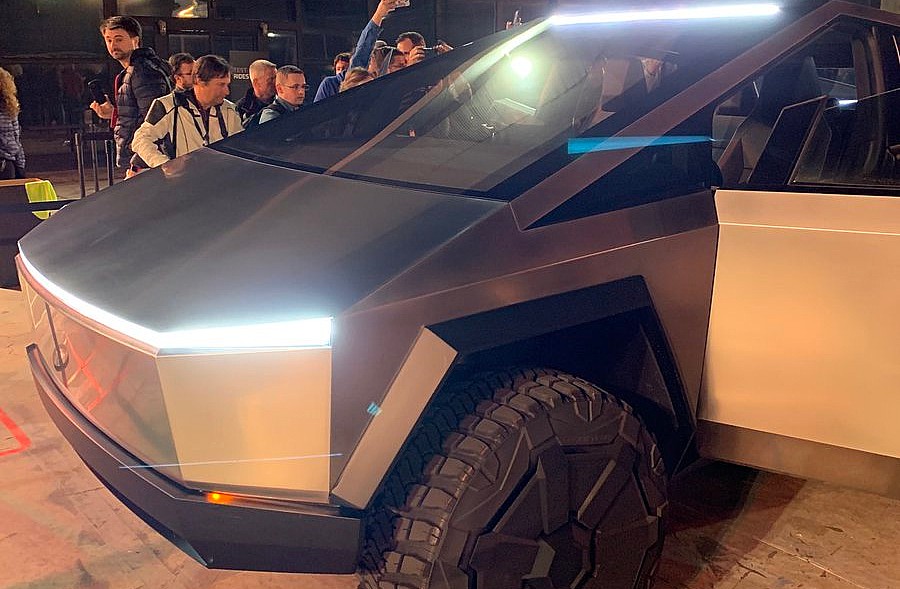
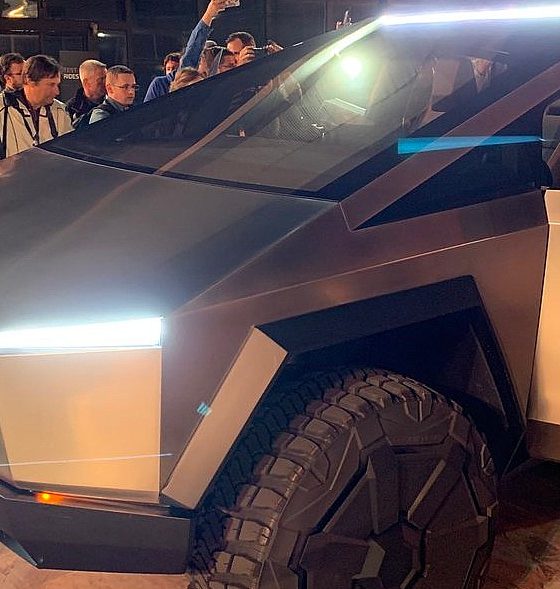
News
Tesla Cybertruck disappoints Wall St but finds support from EV community over price and features
True to Elon Musk’s words, the Tesla Cybertruck is a polarizing vehicle. Unapologetically futuristic and featuring a design straight out of a sci-fi movie, Musk’s Blade Runner pickup definitely looked the part. And just as expected with such a unique vehicle, Wall Street’s Tesla skeptics are not impressed. But just as interestingly, the Cybertruck seems to be gaining some support among potential buyers, many of whom proved impressed with the vehicle’s utility and price.
Cowen’s Jeffrey Osborne, who has an Underperform and a $190 price target on Tesla stock (NASDAQ:TSLA), stated that the unveiling will be remembered for its “Armored Glass fail,” referencing the time the pickup’s side windows cracked after a metal ball was flung at it. “In a night to be remembered for the Armored Glass fail, Tesla’s Cybertruck reveal will likely disappoint current pickup truck owners and we see the vehicle remaining a niche and not a mainstream product… Musk has been enthusiastic about his Blade Runner inspired design for months, but we were still surprised how futuristic he went with this one and believe it may shatter his dreams,” the analyst noted.
Credit Suisse’s Dan Levy, who also has an Underperform rating and a $200 price target on TSLA, remarked that despite the Cybertruck’s specs, it would not affect legacy pickup truck makers at all. “We saw multiple key takes post Tesla’s Cybertruck unveil tonight: 1. Models 3 and Y remain the ‘main event’ for Tesla; 2. We expect Cybertruck to be a lifestyle vehicle; but amid a highly radical design (unlike anything the industry has seen), it’s unclear to us who the core buyer will be; 3. Tesla tried to throw a lot of stones at the legacy pickups on the market, with Tesla highlighting advantages in durability, towing, payload, and 0-60. Yet we think the legacy OEMs can breathe a sigh of relief, as we don’t expect Cybertruck to encroach on large pickup share,” he noted.
Some analysts, such as Canaccord Genuity’s Jed Dorsheimer, who has a Buy rating and a $375 price target for the electric car maker, took a more moderate stance on the vehicle. In a statement to CNBC, the analyst noted that while the pickup’s appearance is polarizing, the vehicle’s price is a strong point. “The starting price point of $39,900 for the 250-mile-range, single-motor RWD design option was also a strong point as this positions the Cybertruck competitively in the middle of the lucrative truck market, with production expected in ‘late 2021.’ While the futuristic design may be polarizing, we are encouraged by the Cybertruck release and believe that along with the coming Model Y crossover SUV, Tesla will be able to address two key categories of the automotive market that it previously could not,” he said.
While even Tesla bulls such as Jed Dorsheimer are cautious about the Cybertruck, the vehicle actually seems to be capturing the interest of potential buyers online. There is no doubt that the Cybertruck’s design is polarizing, but its tech, the durability of its stainless steel body (as shown in the presentation’s sledgehammer test), and its sub-$40,000 base price make the vehicle a compelling alternative to the market’s gas-guzzling full-sized pickups like the Ford F-150. And this doesn’t even take into account the low running costs of an all-electric vehicle, or the Cybertruck’s features such as its 6.5-foot-long bed and adaptive suspension.
Overall, it seems that while the Cybertruck may have shocked a good portion of the internet when it was unveiled last night, potential customers of the vehicle are beginning to see just how bang-for-your-buck the pickup really is. There are very few trucks on the market, after all, that are as large as an F-150, but is quicker, stronger, safer, and better-equipped compared to its gas-guzzling counterparts. At less than $40,000 for its base version, a basic Autopilot-equipped Cybertruck is not a bad deal at all. And more and more potential buyers seem to be seeing it.
Disclosure: I have no ownership in shares of TSLA and have no plans to initiate any positions within 72 hours.

News
Tesla expands Robotaxi app access once again, this time on a global scale
Tesla said recently it plans to launch Robotaxi in Miami, Houston, Las Vegas, Phoenix, and Dallas.
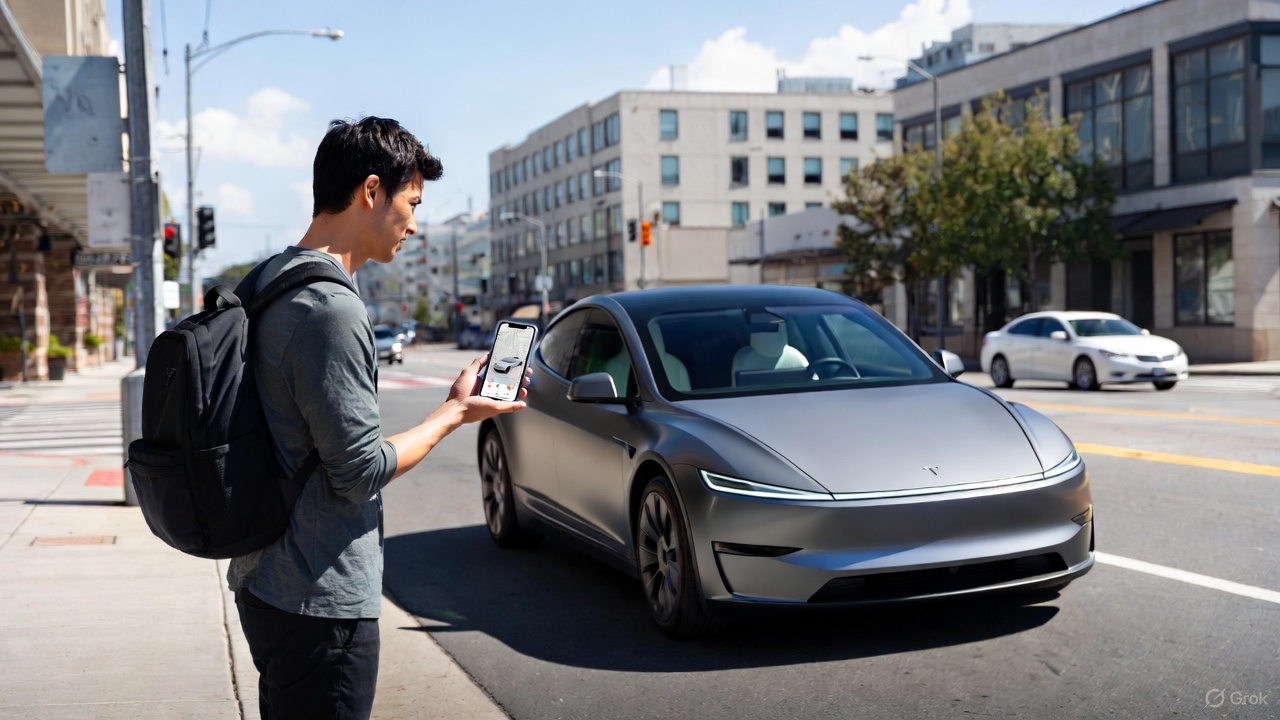
Tesla has expanded Robotaxi app access once again, but this time, it’s on a much broader scale as the company is offering the opportunity for those outside of North America to download the app.
Tesla Robotaxi is the company’s early-stage ride-hailing platform that is active in Texas, California, and Arizona, with more expansion within the United States planned for the near future.
Tesla said recently it plans to launch Robotaxi in Miami, Houston, Las Vegas, Phoenix, and Dallas.
The platform has massive potential, and Tesla is leaning on it to be a major contributor to even more disruption in the passenger transportation industry. So far, it has driven over 550,000 miles in total, with the vast majority of this coming from the Bay Area and Austin.
First Look at Tesla’s Robotaxi App: features, design, and more
However, Tesla is focusing primarily on rapid expansion, but most of this is reliant on the company’s ability to gain regulatory permission to operate the platform in various regions. The expansion plans go well outside of the U.S., as the company expanded the ability to download the app to more regions this past weekend.
So far, these are the areas it is available to download in:
- Japan
- Thailand
- Hong Kong
- South Korea
- Australia
- Taiwan
- Macau
- New Zealand
- Mexico
- U.S.
- Canada
Right now, while Tesla is focusing primarily on expansion, it is also working on other goals that have to do with making it more widely available to customers who want to grab a ride from a driverless vehicle.
One of the biggest goals it has is to eliminate safety monitors from its vehicles, which it currently utilizes in Austin in the passenger’s seat and in the driver’s seat in the Bay Area.
A few weeks ago, Tesla started implementing a new in-cabin data-sharing system, which will help support teams assist riders without anyone in the front of the car.
Tesla takes a step towards removal of Robotaxi service’s safety drivers
As Robotaxi expands into more regions, Tesla stands to gain tremendously through the deployment of the Full Self-Driving suite for personal cars, as well as driverless Robotaxis for those who are just hailing rides.
Things have gone well for Tesla in the early stages of the Robotaxi program, but expansion will truly be the test of how things operate going forward. Navigating local traffic laws and gaining approval from a regulatory standpoint will be the biggest hurdle to jump.
Investor's Corner
Tesla gets price target boost, but it’s not all sunshine and rainbows
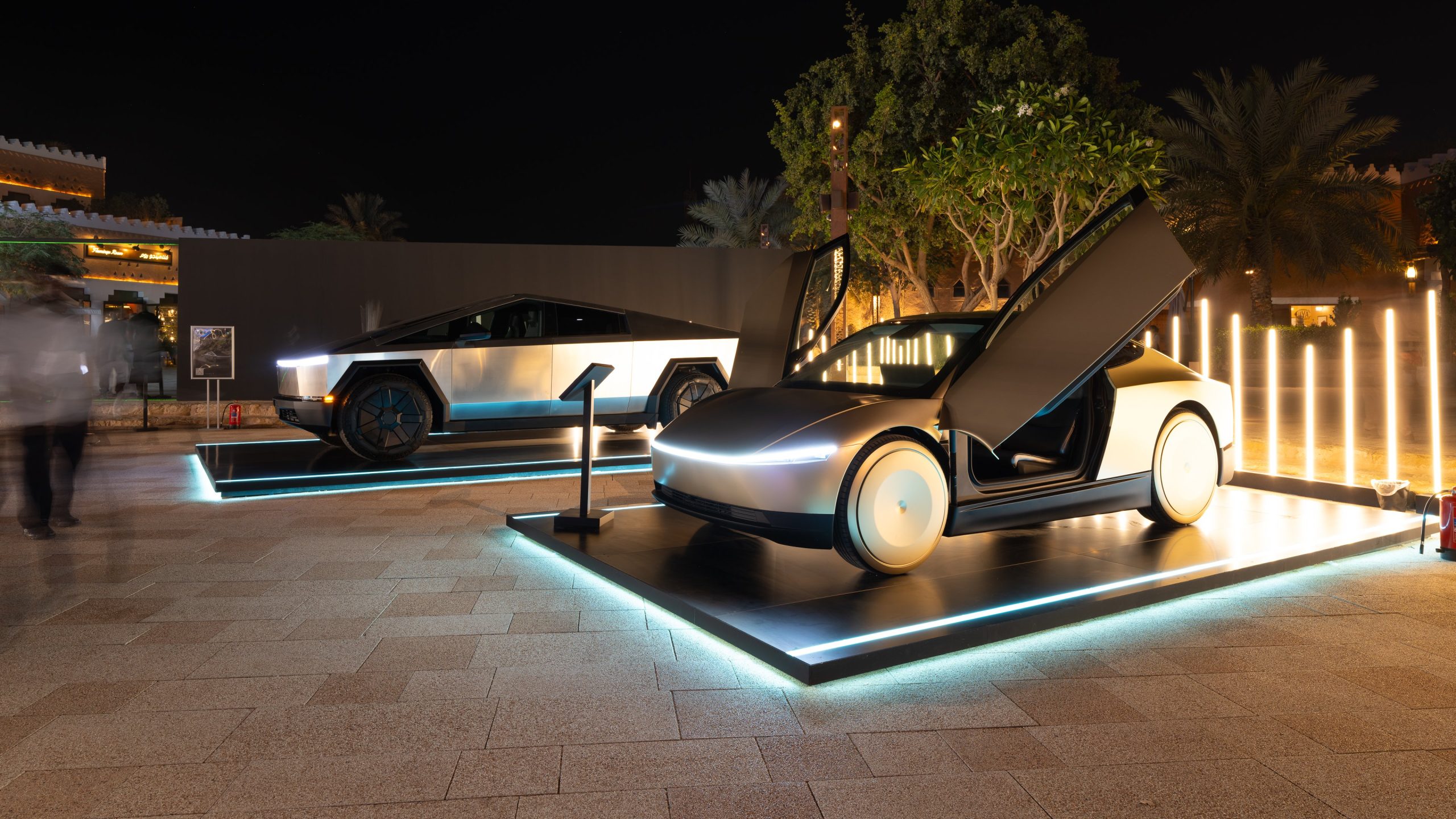
Tesla received a price target boost from Morgan Stanley, according to a new note on Monday morning, but there is some considerable caution also being communicated over the next year or so.
Morgan Stanley analyst Andrew Percoco took over Tesla coverage for the firm from longtime bull Adam Jonas, who appears to be focusing on embodied AI stocks and no longer automotive.
Percoco took over and immediately adjusted the price target for Tesla from $410 to $425, and changed its rating on shares from ‘Overweight’ to ‘Equal Weight.’
Percoco said he believes Tesla is the leading company in terms of electric vehicles, manufacturing, renewable energy, and real-world AI, so it deserves a premium valuation. However, he admits the high expectations for the company could provide for a “choppy trading environment” for the next year.
He wrote:
“However, high expectations on the latter have brought the stock closer to fair valuation. While it is well understood that Tesla is more than an auto manufacturer, we expect a choppy trading environment for the TSLA shares over the next 12 months, as we see downside to estimates, while the catalysts for its non-auto businesses appear priced at current levels.”
Percoco also added that if market cap hurdles are achieved, Morgan Stanley would reduce its price target by 7 percent.
Perhaps the biggest change with Percoco taking over the analysis for Jonas is how he will determine the value of each individual project. For example, he believes Optimus is worth about $60 per share of equity value.
He went on to describe the potential value of Full Self-Driving, highlighting its importance to the Tesla valuation:
“Full Self Driving (FSD) is the crown jewel of Tesla’s auto business; we believe that its leading-edge personal autonomous driving offering is a real game changer, and will remain a significant competitive advantage over its EV and non-EV peers. As Tesla continues to improve its platform with increased levels of autonomy (i.e., hands-off, eyes-off), it will revolutionize the personal driving experience. It remains to be seen if others will be able to keep pace.”
Additionally, Percoco outlined both bear and bull cases for the stock. He believes $860 per share, “which could be in play in the next 12 months if Tesla manages through the EV-downturn,” while also scaling Robotaxi, executing on unsupervised FSD, and scaling Optimus, is in play for the bull case.
Will Tesla thrive without the EV tax credit? Five reasons why they might
Meanwhile, the bear case is placed at $145 per share, and “assumes greater competition and margin pressure across all business lines, embedding zero value for humanoids, slowing the growth curve for Tesla’s robotaxi fleet to reflect regulatory challenges in scaling a vision-only perception stack, and lowering market share and margin profile for the autos and energy businesses.”
Currently, Tesla shares are trading at around $441.
News
Tesla Optimus dramatically collapses after teleoperator mishap
It seemed blatantly obvious that whoever was controlling the Optimus robot from behind the scenes did not disconnect their ability to manipulate its movements
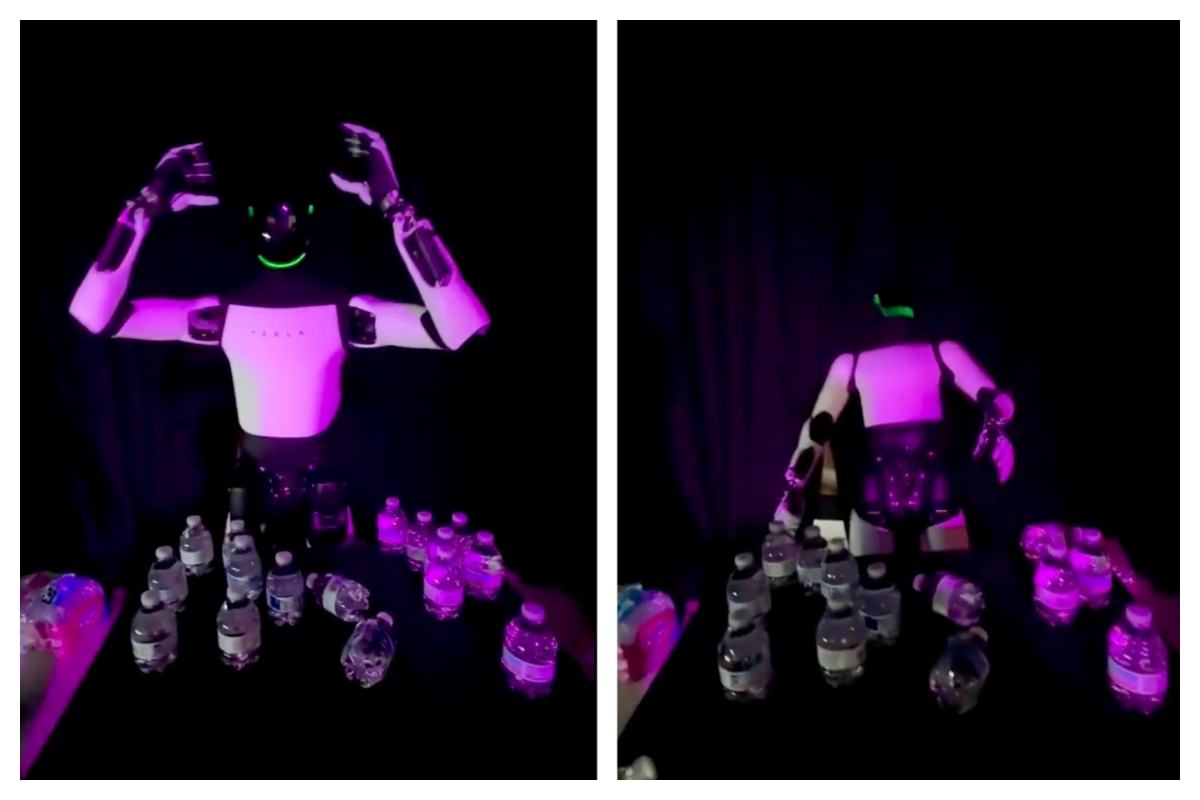
Tesla Optimus dramatically collapsed after a teleoperator mishap at the company’s “Future of Autonomy Visualized” event in Miami this past weekend.
It seemed blatantly obvious that whoever was controlling the Optimus robot from behind the scenes did not disconnect their ability to manipulate its movements, then left the controls, causing Optimus to collapse.
A video captured at the event shows Optimus doing a movement similar to taking a headset off, likely what the teleoperator uses to hear guest requests and communicate with other staff:
🚨 Tesla Optimus mishap at the Miami event
To be fair, don’t we all want to do this around the Holidays? pic.twitter.com/EJ5QKenqQd
— TESLARATI (@Teslarati) December 8, 2025
After the headset removal motion was completed, Optimus simply collapsed backward, making for an interesting bit of conversation. While it was a mishap, it was actually pretty funny to watch because of the drama displayed by the robot in the situation.
This was obviously a mistake made by the teleoperator, and does not appear to be a spot where we can put any sort of blame on Optimus. It would have likely just stood there and waited for controls to resume if the teleoperator had disconnected from the robot correctly.
However, details are pretty slim, and Tesla has not announced anything explaining the situation, likely because it seems to be a pretty face-value event.
Tesla Optimus shows off its newest capability as progress accelerates
The Tesla Optimus program has been among the most hyped projects that the company has been working on, as CEO Elon Musk has extremely high hopes for what it could do for people on Earth. He has said on several occasions that Optimus should be the most popular product of all time, considering its capabilities.
Obviously, the project is still a work in progress, and growing pains are going to be part of the development of Optimus.
In its development of Optimus Gen 3, Tesla has been working on refining the forearm, hand, and fingers of Optimus, something that Musk said is extremely difficult. However, it’s a necessary step, especially if its capabilities will not be limited by hardware.
All in all, Optimus has still been a very successful project for Tesla, especially in the early stages. The company has done an excellent job of keeping Optimus busy, as it helps with serving customers at events and the Tesla Diner, and is also performing tasks across the company’s manufacturing plants.








